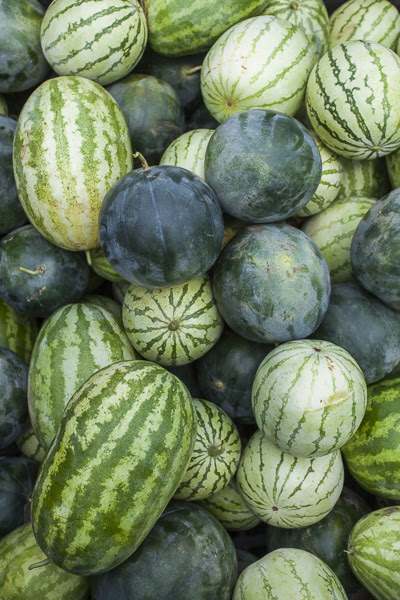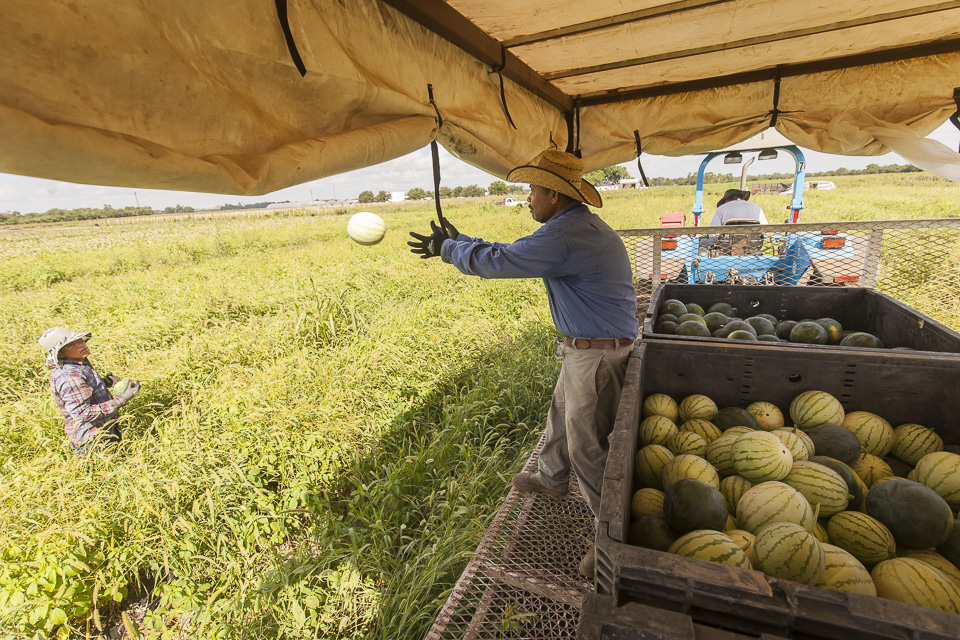
WATERMELON: A HISTORY
08/06/21 — Farm

In honor of National Watermelon Day last week, we thought it about ripe time to delve into the history of this darling of the summer crops. Did you know that the watermelon, or the Citrullus lanatus, has been cultivated for around 5,000 years? This trailing and flowering vine hails from the Cucurbitaceae family. The progenitor of the modern watermelon is known as the ur-watermelon and was cultivated in Africa before spreading to the Mediterranean, Europe and beyond. Watermelon arrived in India in the 7th century and China in the 10th. Fun fact: did you know that China is currently the world’s largest watermelon producer? By the late 1500s, colonists were cultivating watermelons in the New World, and by the 17th century, these melons were ubiquitous in European gardens. Another fun fact: in ancient Greece, watermelons, or “pepon”, were thought to have healing properties, and were used as a diuretic and a treatment for heatstroke.
With regard to where in Africa the ancestor of the watermelon originated, there is no real consensus. Harry Paris, horticulturist at the Agricultural Research Organization in Israel, thinks that the true ancestor of the watermelon is from Northeastern Africa, and is known as Citrullus lanatus var. colocynthoides, otherwise known as gurum in Sudan and gurma in Egypt. These bitter melons grow wild and rampant in the deserts of Sudan and Egypt, and were small, green, and bitter compared to the modern melon.
 Photo by Scott David Gordon.
Photo by Scott David Gordon.
Evidence from tomb paintings suggests that Egyptians were farming and cultivating watermelons as early as 4,000 years ago. The the fruit portrayed in these paintings is more round compared to the modern day oblong watermelon, meaning that the Egyptians probably cultivated these fruits over time, changing their taste, toughness, and shape.
Despite the ancestral varieties being bitter and not very tasty, these crops were kept around because of all the water they retained and because of their storage life. During the hot and dry seasons in Northern Africa, these gourds were great sources of water when pummeled, and could last for a considerable period when stored in a shady and cool place. The Egyptians placed them in tombs so that the deceased Pharaohs would have a source of water on their long after-life journeys. Watermelons were perfect vessels for water during long nautical expeditions, as well.
Photo by Scott David Gordon.
Information from Hebrew tithing records shows that by the third century , watermelons had been grouped with figs, grapes, and pomegranates. Meaning that by then, they had been cultivated to be point of being considered sweet! These watermelons were described as having yellowish flesh in the earlier cultivations, but as the fruit got sweeter, it became redder in hue. Why you ask? Genes that contribute to a watermelon’s sweetness and sugar content are paired with genes that turn the flesh red.
At JBG, we grow a plethora of melon varieties with three different kinds of watermelon in the mix: Red, Yellow, and Sugar Baby. Since you know the aged and colorful past of this crop, visit us at markets this weekend and enjoy some while you still can! 'Til next time.
 Photo by Scott David Gordon.
Photo by Scott David Gordon.





 0 ITEMS IN CART
0 ITEMS IN CART 

